Using Crowdsourcing To Launch Your Own Product
Launching a product in the midst of a coronavirus pandemic can be tricky and definitely not a challenge for anyone.
But Shannah isn't just anyone.
A certified financial planner with an MBA and founder and host of the Millennial Money Podcast, Shannah's plans to launch her product took a setback when the coronavirus hit.
So she decided to turn to crowdfunding.
Shannah joins us on this latest episode of Start Yours and shares all about her product launch. From launching her podcast and doing market research for her product to finding manufacturers and setting up her Kickstarter campaign, we'll be covering plenty of ground today.
Be sure to tune in because this is an episode you don't want to miss.
If you enjoy the podcast, we've got loads more juicy content on our Oberlo blog. And don't forget to subscribe!
Prefer a summary? We've got you covered. Here's a seven-point TL;DR version:
- Podcasting is a great and one of the least expensive ways to build an audience.
- When people create products for someone else, they often don't fully understand the clauses and contracts that restrict them.
- When doing market research, take feedback with a grain of salt because it may not be from someone who's going to buy your product.
- Having a niche is not a bad thing because it keeps you very focused.
- With crowdsourcing, it's not a bad thing to have a lower financial target.
- Take inspiration from similar and successful Kickstarter campaigns to build yours.
- When selecting manufacturers, interview a few of them instead of just going with the first one.
Start Yours is a podcast about ecommerce, dropshipping, and all things launching a business.
Join us as we meet entrepreneurs who have gone through the triumphs and headaches of running an online store, and learn how they managed to survive and thrive.



Starting a Podcast on a Whim
Aleisha: Okay, Shannah. Let's talk a little about building an audience, set out expectations that we see from new business owners is that they rush, they get a product to market, they're all ready to go, but then they're like, "Who do we market this to? We have no one to sell this to 'cause we haven't built a brand, we haven't built an audience?"
Tell me a little bit about how you started your podcast and then also how you built that audience organically over the years.
→ Click Here to Launch Your Online Business with Shopify
Shannah: Yeah, that's such a great question because the audience obviously is the most important piece because they're the people that are gonna be buying your product. So about five years ago, I started a podcast just literally on a whim. I said, "I'm gonna create a podcast," and about two weeks later, I had the first episode out.
And about a month later, it was charting at the top of the charts. Granted five years ago, the podcast world was a lot different than it is right now, but I'm still gonna take that claim to fame, but...
Aleisha: Yes, you should.
Shannah: Yes, so I know. But the podcast has been a great way to build an audience. I think it's one of the least expensive ways to go about audience-building because podcasting is this amazing marketing medium where people...
Once you build that audience, people just tune in every week or every episode, however often you're publishing an episode. And they're live. They're there. They're waiting to hear from you. And so you can talk to them about products or about a challenge or a book or whatever it is you have going on.
So really spending those years to cultivate an audience and build up an audience was certainly one of the smartest moves that we made.
We didn't know we were making it for this purpose, but you have a live audience there sort of waiting for more from you. And so, it was just a great way to really tie that into our Kickstarter Campaign and really rally around it, especially in this very bizarre year that we're in.
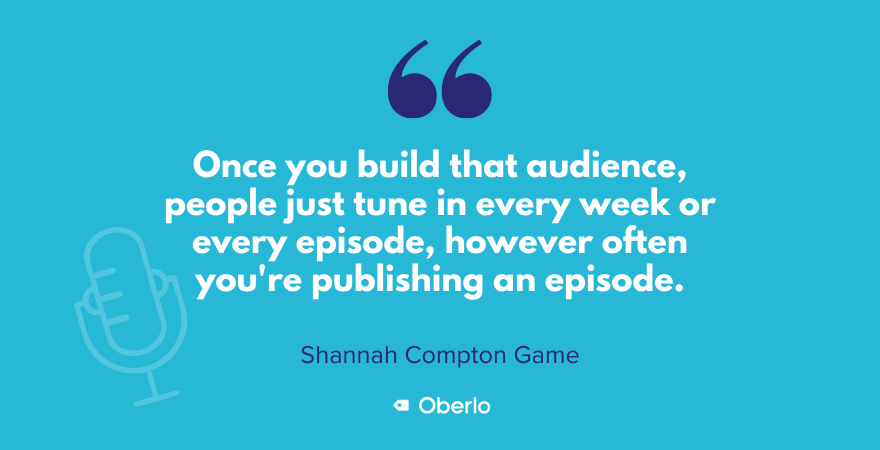
Aleisha: Yeah, obviously, when this whole kicked off, you had no idea that a pandemic was about to start. So clearly that has to be mentioned that you are basically launching a product in this sort of shit show of an environment that we are currently in, but you have really adapted to it.
I wanna get to the Kickstarter in a second. But just to come back to the Millennial Money podcast, you have quite a specific niche, but over the last five years, you've been able to really expand on the brand.
Tell me a little bit more about the show, just so people can understand where you're coming from, and then what you are now launching as a product, how that connects with your pre-existing brand?
Shannah: Yeah, that's a great question. It's definitely evolved over the years. In the beginning, I'll be probably the first one to admit that I had no strategy, which is certainly not the way you can wanna launch anything, let alone a podcast. But guilty as charged, I had absolutely no strategy.
The podcast Millennial Money really came from an article that I had written that ended up going viral about, "Smart Money Moves to Make in Your 20s and 30s." And I thought, "Okay, well, there's something to this."
So back in 2015, luckily, there were a lot of podcast names available to you, so I went back into... I have an MBA, so I went back into my knowledge bank and went, "Okay, I've got to niche this podcast well."
So I just said, "Everybody's talking about Millennials. Let's just call it Millennial Money." And I am on that cusp between Gen X and Millennials, so I was like, "You know, I'll just play the big sister role."
But we talk about everything on the show. I've done over 600 episodes. So there's pretty much an episode about everything related to money. But really what it has evolved into is this focus around money wellness, around the individuality of money, where you don't have to follow a certain checklist or there's no perfect when it comes to money.
And so my mission really is to provide information to people that they wouldn't know where to get anywhere else.
And to provide a place for them to feel safe to talk about money because, let's be real, most people do not wanna talk about money, and I don't blame them. But it happens to be very important, and we say, "Money touches all aspects of your life, so we're gonna talk about all aspects of your life."
Aleisha: I just wanna say what is delightful about your show is... To go back to that idea that we have this real hesitancy to speak about money and that money isn't really discussed in a lot of families and especially at school as well.
I know one thing you sort of say is we talk about maths, but we're not really talking about how we manage finances. So that can be something that kids are completely unaware of, and then they're let go into the world and given credit cards and get into debt and go into all that sort of nightmarish stuff.
What I love about your show is that you, I don't wanna say keep it real, but you really do when it comes to talking about cash and making sure that it's not a bad thing to talk about.
Shannah: Yeah, I find this weird thing happens with a lot of money experts, and probably a lot of the popular names that might pop in your head when you think about money expert is they want to put themselves on this pedestal and pretend like they've done everything correctly or pretend like you are wrong if you're not doing certain things.
And I just call bullshit on that because that's not the place of being authentic and being real. So I come to the podcast. I share everything. I'm a certified financial planner. I've worked with people with hundreds of millions of dollars in assets down to people just starting out, and I've seen the similarities with people and their money.
And so that's a place that I want to meet you at and talk about on the show so that you feel like you're a human being and that you can do this stuff, that it's not just for people who are wealthy or people that you see on TV, that you can make mistakes, but you can also pick yourself up and you can still have this amazing life.
Owning Your Stuff
Aleisha: And I think that's really a good little jumping-off point to talk about how we are coming to talk today and what you are now doing using that fantastic audience and also your ability to pivot when it comes to building brands and building businesses and making money.
You, I'm sure, have been approached over the years to write books and create products. But you have decided to go your own way and do your own thing. Tell me a little bit about that decision-making and what you actually are creating with your husband, Jeff, in this new enterprise.
Shannah: I'm a big fan of owning your stuff, and it's certainly not an easy route to go if I'm gonna be really honest.
Aleisha: No, it's not.
Shannah: Yeah, it requires a lot of capital, it requires a lot of just gumption and to just sort of push through fear blockades that you probably feel. It's much easier if someone comes to you and says, "Hey, I've got all this money," or "I've got this big book deal or... " That's a really nice way to go about things.
But like I said, I've been an entrepreneur my whole entire career. I started a film festival when I was 19 in college out of nothing, and grew that into something pretty successful and ended up selling that.
So I've just always had this huge belief that you can build your own things, you can find an audience for your own things, and then at the end, the pay-off is even better because you own everything and you don't have to split with someone or you don't write a book, and then suddenly you don't have any rights to that book.
There are a lot of things that people don't realize when they create products for someone else. There are clauses and contracts that restrict you from a lot of things.
So for me, I just always thought, "This is the way I wanna do it even if it takes a bit longer or maybe it's a little bit harder." But there's always a way to come up with money, and I think that's a really important lesson that I've learned my entire career is to not let the money piece stop you because if you do, if you just think about, "How much is it gonna cost me to do this thing?" you can really stop yourself. You can really get stuck in the muck.
But there's always a way. There's always somebody that's gonna either be interested in investing in something or buying a product or doing... What we created was the Money Mindset Journal, and I did not intend on launching this thing on Kickstarter.
But we hit 2020, and it was like, "Okay, we need to think about things a little bit differently. How are we going to generate revenue? We're gonna have to create something different around this product."
So that's just a very long-winded way of me saying that I think it's really important to create your own stuff and to own your own stuff and even if it takes quite a long time to get to that point where you're actually making money from it, that that's okay.
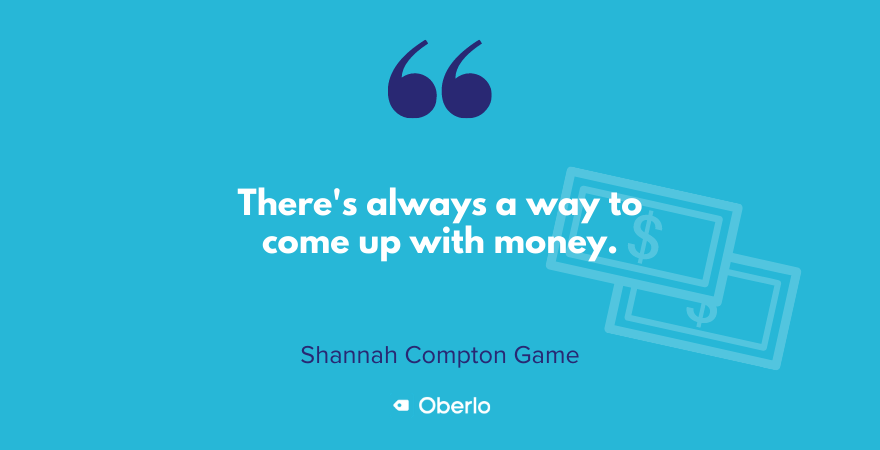
Creating the Money Mindset Journal
Aleisha: Yeah, we've got a lot of listeners who are into dropshipping and running ecommerce stores, but then either get to a point where they want to create their own product and graduate to being full-fledged manufacturers.
But it can be really sort of nerve-racking, as you said, to invest the money and then work with multiple manufacturers, working out trademarks and patents if they're going down that route as well. It can feel pretty overwhelming.
But it's really great to see that with what you're doing, creating a journal and designing it, making sure that it matches your brand, it's sort of simplistic in a way because it's all the information you've been giving on the podcast and all the external things that you've been absorbing over the years, as you said, health and wellness as well as lifestyle stuff.
Tell me a little bit about when you started designing the journal. Had you created a physical product before or was this the first time for you both?
Shannah: I had never created a physical product before, so there's a lot that I learned in this process. But this was actually the Money Mindset Journal was something I had used myself for years and years because I had struggled with my own money mindset.
And even as a money expert, I'd really struggled to stop the negative talk and to get myself focused and knowing how important money mindset is to your overall money success.
I started teaching it to other people that I would work with. And so I started teaching them a modified version of what is actually in the journal today. And there was just an a-ha moment last October 2019. I think something in me said, "2020's gonna be a little bizarre of a year. You need to create something." And so I just...
Aleisha: If we could have had that inkling, could you have spread the word?
Shannah: Do you know I had this really bizarre feeling that March 2020, something weird... There was gonna be this whole shift. I, of course, could not have foreseen any of this, but...
Aleisha: She's a certified financial planner and a psychic.
Shannah: Right.
Aleisha: Shannah, thank you.
Shannah: I wish. That would be so helpful.
Aleisha: Yeah, sorry. Let's get back to your journal, come on. Sorry.
Shannah: Yeah, so I just thought, "People need this." I'd been talking about money mindset on the podcast for a couple of years now. I had a really bizarre thing happen in October 2018 where I had a vaccine injury and became deaf in my left ear, and so I had no choice other than to really focus on mindfulness and my mindset.
And so it just was kind of this natural calling that I felt, "I need to put this down on paper once and for all, create this product, and get it out to market." Because there really wasn't anything like this out there. And so I thought, "Okay, if a few people have benefited from this, how could this maybe change the world?” if I can be so audacious with that goal.
Aleisha: No, it's... Be audacious. I think that's really bold, and I think that's actually where creating a product, I suppose people talk about solving a problem and then saying, "How does this product or how does this service solve a problem? Great, then there's a business in it."
I was going to ask you later on about market research, but you've just raised the topic right now, so let's head to it. You have obviously a great audience, and I know people listening might go, "Yeah, but I don't have a podcast audience of five years."
Talk to me a little bit more about when you first started giving them the basis of what the journal was to be to your listeners. And as you said, you've been working on it with the podcast as well, but tell me a little bit more about market research when you started to actually figure out what was going to be in the journal and what it was going to look like. How did you take the feedback and then actually put it into creating the product?
Doing Market Research
Shannah: I started first with what worked for me and what worked for some other people that I have walked through the money mindset process, so that was sort of the basis of it. And then I started to talk on the podcast about little different elements that I wanted to have in the journal without really my podcast listeners knowing that I was doing some market research. And so they would send back questions to me verbatim of what I wanted to put in the journal.
So I started to think like, "Okay, this is resonating."
But I also went to... If you don't have a big audience, I went to some of my friends as well and just said, "I'm thinking about creating this product I have. I created a survey. What would you want in it? What would you not want in it? Does this resonate with you?"
And really just kept coming back to this group of people, and they were of all different backgrounds, all different income levels. Some were into money mindset. Some were like, "What is this thing?"
And I really just started to ask them, "Would this feel good for you?" And then in the end, I think when you're creating any product, you have to also go with your gut. What is your gut telling you? What is something that you feel really passionate about putting in the product that maybe somebody else, either they didn't like or they didn't resonate with, but you feel really called to put it in there? I think that's the process of creating any product is...
And it's a delicate balance because I think just like a great musician who writes a song and puts together an album, they can look at that until the end of their life saying, "Well, I could have done this, or I could have put this in here. I could have... "
And so I think if you're a creator or an artist or if you're creating a product, there's at some point where you're like, "Okay, I'm getting it. This is probably like 90 percent there, and so I gotta bring this product to market. I can always make changes to this product."
Even to this day, I'm like, "Oh gosh, I would probably change a few things." But not that anybody else would notice that. That's just sort of the being a little bit of a perfectionist type of person.
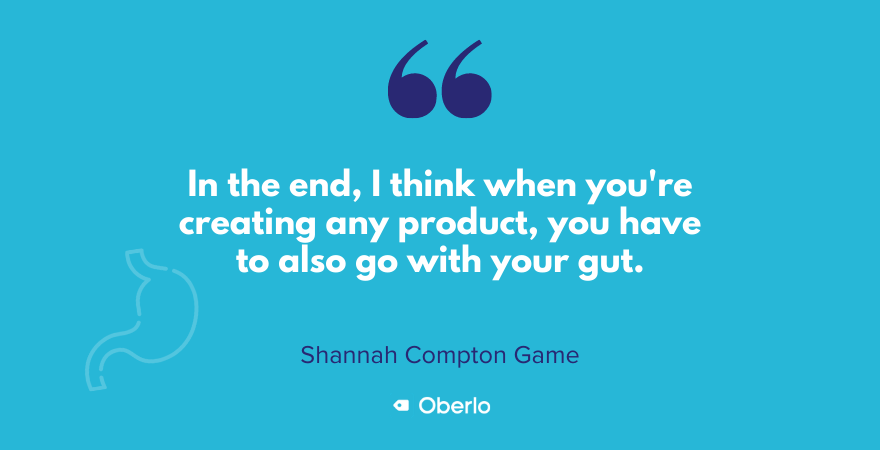
Aleisha: Sure.
Allanah: But I think doing market research is really important, and it doesn't have to be to a huge audience. You just need to find a variety of people and ask them questions, like give them lots of bits of information and keep going back to them until you really refine what you want your product to be.
And also take what they give back to you with a grain of salt because they're not always right or they might not always be the right person that is going to buy your product.
So that goes back to really thinking about… We created a whole avatar of who is our client or who is our customer, really? What are they like? What clothes do they wear? What does their house look like? What sort of plants do they buy? All of these crazy things. What music do they listen to?
And so that avatar then helped us really uncover, "Okay, here are the bits that we think would really resonate with that audience in this journal," and it keeps us focused on who we're really marketing this to. If other people buy it, fantastic, but we really wanted to make sure that we're delivering a product for a specific audience.
Aleisha: And that's a really good point, no matter whether you are creating your own product or selling someone else's product, it's so easy to create that avatar. And we've heard over the last season talking to lots of merchants who have said that that's been their biggest win when they're looking at creating Instagram and Facebook ads, that they are really being specific with who they're marketing to.
And that seems like an obvious thing, but also you can't just really throw... I was gonna say throw shit at the wall, but that's very crude. But it is literally when you are just throwing a lot of money into advertising, if you don't have that avatar and you don't know who you are directly marketing to, you can waste a lot of money and also market to people that just aren't interested in what you are putting out there.
Shannah: It's the same thing with starting my podcast. I mean, I could talk about money topics to a very wide audience. But I learned very, very well in my strategic marketing class, getting my MBA, that you're much better off to niche products down, to niche something down. And if other people on the periphery wanna buy your product or listen to your podcast or watch your videos, whatever it is, that's fantastic.
But it's not a bad thing to have a niche because it keeps you very focused. It also keeps the dollars that you're spending on advertising or whatever it may be in that example you just gave, it keeps it focused rather than trying to be everything to everyone. Those products don't normally have a long shelf life.
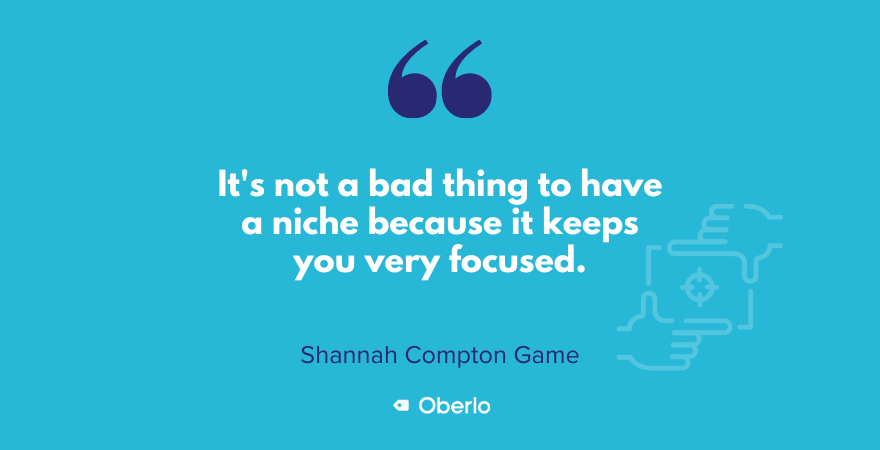
Aleisha: Yeah, exactly. Yeah, you gotta be ready to pivot if you're into that sort of marketing. Now, let's talk a little bit more about the journal. So you've created the journal. I'm assuming you had a designer come in and help you make it look the way you wanted it to look in your mind.
Shannah: Yes, yes, we absolutely used a designer, which I think you have to do. You have to pay that cost no matter what 'cause you want your product to look really good.
Getting the Idea To Launch on Kickstarter
Aleisha: Yeah. So you... That was your initial investment. You went to a designer. You worked on it. You obviously wrote the book. You used all of the information that you had in your brand and you put it into the journal, and then you came to the conclusion in October last year that you were going to go into a crowdsourcing Kickstarter campaign situation.
Tell me a little bit more about what led you to that, and also the research that you did behind the scenes to know that that was the right decision to get this journal into the hands of your customers?
Shannah: Well, starting out in October when... I mean, we actually brought this product really quickly to market, so that would be another piece of advice I would give someone is don't sit and labor over something for too long.
Aleisha: Yeah.
Shannah: So, from October through December, we were working with the designer, we were refining the content, we were creating the structure of the journal. And in January, we had fully intended to just do a normal presale, build the website, launch out.
And then, of course, coronavirus hit and the world changed.
And we thought, like, "Okay, we have to change our... We have to change how we're gonna bring this product to market." And I just kept thinking, "We need some sort of event around it. We need some sort of... Something that we can really put our efforts behind."
And I was not a fan of crowdsourcing, of Kickstarter. I just thought, "Oh God." I mean, I had done that when I had started my film festival way back, and I just had horror memories of trying to raise certain amounts of dollars.
But I thought, "This makes sense for this specific time for this product." And certainly, we were in this time when people were thinking about money, so having a product about money mindset could maybe resonate pretty well with people.
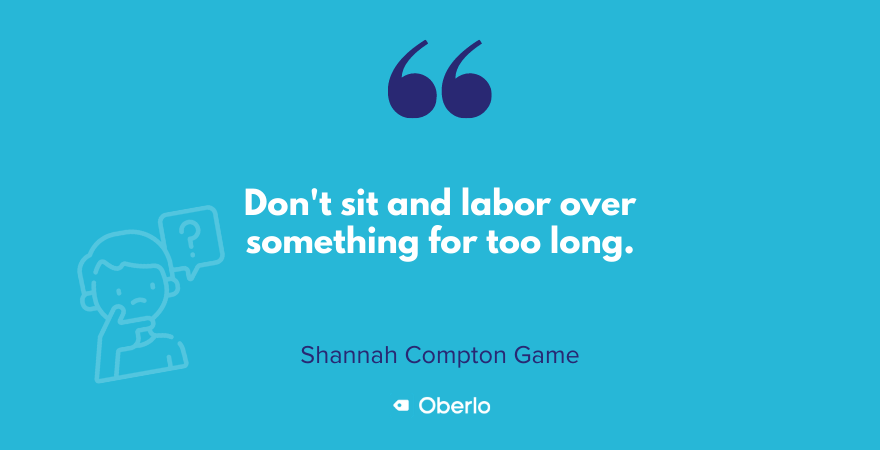
Aleisha: Yeah.
Shannah: So we made a whole pivot at the beginning of this year. I mean, we weren't intending to do this at all. And I think it was on a Friday we had decided like, "Okay, we're not gonna do just the traditional route. We're gonna do Kickstarter." And within three weeks we had the whole Kickstarter built, and we were launched on Kickstarter.
We launched in May 2020. So, it was just sort of one of those things that we kind of just threw ourselves into and thought, "Okay, we need to just do this, create a 30-day sort of event campaign, if you will, around this, and let's just see what we can do."
So, we weren't married to one specific way of how we were gonna launch, but then it just felt like crowdsourcing made sense in that specific time for us.
Setting up the Kickstarter Campaign
Aleisha: Now, what was your goal when it came to the financial benefits of Kickstarter? 'Cause I'm sort of impressed that you didn't go for, like, $500,000 'cause I think people immediately expect with crowdsourcing that people need an extremely huge amount of money. But that actually isn't the case at all, is it?
Shannah: There's a real art that I've learned to coming up with that dollar amount for crowdsourcing. And obviously, this is where you need to look back at like, "Okay, how many units of the product do I realistically want to manufacture? Okay, what are those costs? What does that look like? And do I need extra funds for a website or for Facebook ads or what are those numbers?"
But I always say, with crowdsourcing, what I've learned is if you go a little low, that's not a bad thing. Like, if you take... Let's say you added all those numbers up and you came to $10,000, why not set your goal at $8,000 or $7,000?
Because there's this really weird phenomenon that happens in the human brain when someone sees that your crowdsourcing is either funded or close to being funded, people all of a sudden ante up more money.
Aleisha: Right.
Shannah: People want to be attached to those crowdfunding products that are gonna be successful, that are gonna end up in your hands. So, we spent many, many, many days laboring over, "What is that number? And what is the right number for this specific time?"
I think if we had been in a different year, we probably would have had a higher goal.
We only set our goal at $8,000 knowing that if we got that funded, we'd have enough money to bring our product to market and to do some of the things that we wanted to do, but certainly, we weren't rolling in the cash.
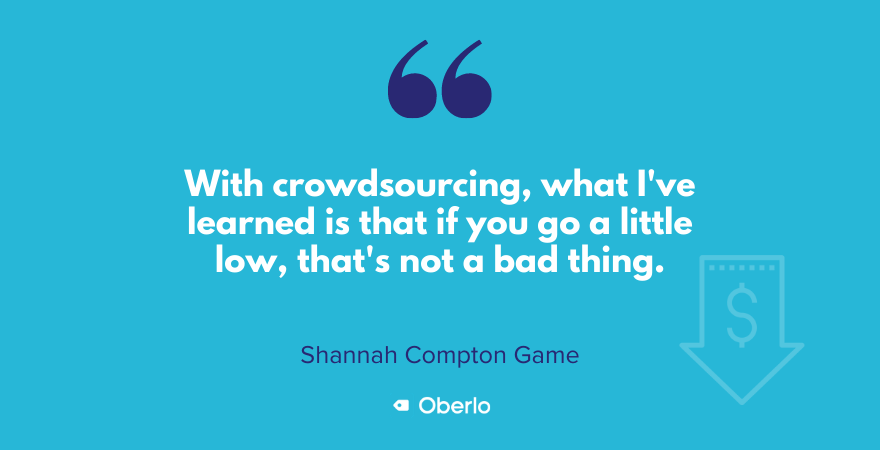
Aleisha: Yeah, right. So you hit the $8000, and then what... I noticed looking at your page, and it's a really lovely-looking page. And I say "lovely," that's probably not doing it justice. It's a really schmick professional-looking Kickstarter page.
You've got great mock-up imagery. You go to video, there's a great video of you talking about the journal, which I think really adds a personal level to it as well. You're not just some random company putting out a journal. You are the author, and you're talking all about the benefits of buying the journal.
Tell me how you came up with the three levels of investment for people who were jumping in and offering money to participate?
Shannah: That was a really tricky part. I mean, everything about it was tricky down to even the graphics. But realistically, what we did was we looked at other journal... successful Kickstarter journal campaigns. And we said, "What did they do? What did they not do? And what sort of…” 'Cause you can see how many people bought at different levels on other people's Kickstarter campaigns.
So we really just went to their campaigns and said, "Okay, what did they do?" What is that number that we need to cover for each journal, factoring in our costs? And so, it was really, at the end of the day, we looked at everything and we went back and forth about different numbers, and we just sorta said, "Okay, we're gonna pick these specific numbers and just roll with them."
But definitely if you're gonna do Kickstarter or any other crowdfunding, there's so much information available to you by campaigns that have already successfully been funded in every sort of niche.
So, look back at them. Look at their pages. How are their pages laid out? What were their levels? What were their bonuses? What did they do? And use that as the basis, so you don't have to create from scratch.
You can really take what they've done and just transform it into your words, into your imagery, whatever that might be to sell your product.
Aleisha: Yeah, take influence, but don't just rip other people's stuff off, 'cause people are pretty quick to see that.
Shannah: Exactly. Yes. Yes, don't rip it off. We want no plagiarism here, but you use it as just like a… A little bit of like a template, if you will, of, "Okay, this is how they successfully sold this product, and I'm sort of in the same niche. Can I borrow any of those elements like what really works on their page?"
And a little bit is a guessing game, but when you look at enough... Like, when we looked at five or six different journal Kickstarter campaigns. We were like, "Oh, these all pretty much have the same sort of elements on their page. There must be some rationale behind that."
Keeping Contributors Informed
Aleisha: And also I suppose you needed to consider in the era of COVID as well the communication. And I've noticed on the page, there are lots of updates. You are jumping in there quite regularly, even now, giving all of the investors' information about when the journals are coming.
Tell me a little bit more about how that's been important to you, I suppose, with maintaining communication with people that have given you money for something that has potentially been delayed.
Shannah: That's a little bit of like the weird part about crowdsourcing, right, is that most crowdsourcing, there's this delay between when you purchase and when you actually get it. So, in that regard, it actually worked to our advantage because people are used to just in a normal year that crowdsourcing campaigns work like that.
Aleisha: Right.
Shannah: So, there wasn't this like, "Wait, you mean I have to wait three months for my journal?" So there was already some of that built-in. And then we knew ahead of time that we were gonna do a couple of things to sort of bridge that gap. For instance, everyone who contributed also got a free digital copy of the journal right away, so they're able to start going through at least a digital copy.
And then we also recorded some Money Mindset meditations, audio meditations. They got those as well. So, we were trying to front-load with some things that felt like you were still getting something right off the bat, even if you were gonna have to wait a while.
But yeah, I've just tried to be very transparent, and there's no way to sugar-coat things other than, “There's just delay and there's not much we can do about those, but we are working every day to make sure that you get your journal ASAP.”
But I just put myself in the shoes of, "If I was the customer, how would I want someone to reach out to me? And would I want them to give me anything a little bit extra, just so I felt like I was getting some sort of value?"
Aleisha: Yeah, well, I think it's great, and the fact that you have given them the PDF, they know what they're going to expect. And then when they get their shiny gorgeous journal later in the year, it'll be amazing to have that arrive in the mail. Fantastic. If the mail still exists.
Shannah: Right, you know, who knows?
Deciding on a Manufacturer
Aleisha: It'll all be by pigeons. Before I let you go, I just wanted to touch on manufacturers, because obviously, as you said, if you'd gone with a mainstream publisher or if someone else had taken you up on this idea, they would have done all of the heavy lifting of having to talk to a printer and looking at freight. Tell me a little bit about the process.
Shannah: I literally went to, "Who are our journal competitors? And who manufactures their journals?" And went and talked to those different manufacturers to say, "Okay, they're already working with a very reliable revenue-producing journal company, and so... "
But it's definitely a tricky decision to make, which manufacturers to go to.
We ended up going with a manufacturer in China, which I wish we could have found someone a little bit more local, but...
Aleisha: Yeah.
Shannah: Any of the US manufacturers just laughed in our face when we would come back with the price comparison. And so, it's more than a little disappointing that manufacturers in the US or even in Canada can't be more competitive.
I'm not saying that they need to lower their prices to nothing, but really, it's like your only option is to go overseas to get your products printed and to be able to have the margin that you want to have. But I really say like, interview, talk to at least two, three different manufacturers. Don't just go with the first one. And we ended up ordering...
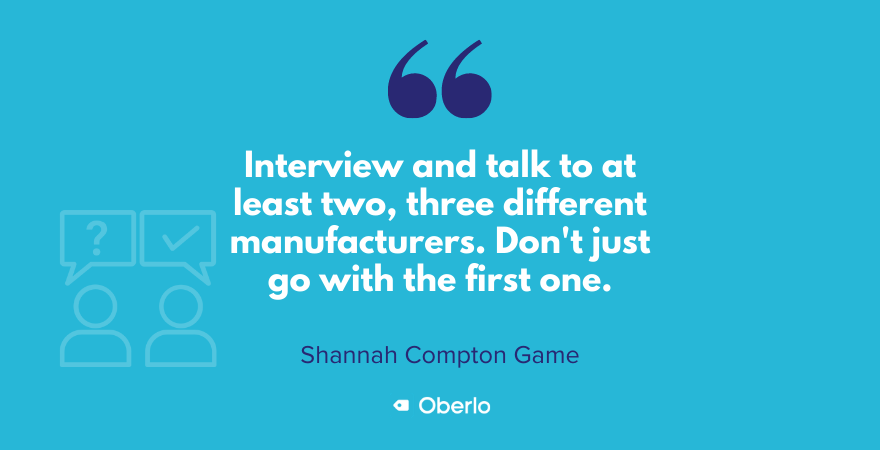
Aleisha: Yes.
Shannah: We spent a lot of money ordering samples of our actual journal. So, we ordered... I think four different samples until we got it exactly the way we wanted to get it, and that was everything from the cover. We have a leather cover, so the cover to the pages to the field to the print to everything.
So we spent many months just doing that process, and I think that's really important if you're manufacturing anything.
Get the sample product exactly how you want it to look like for a customer, then you know you've found your right manufacturer.
Aleisha: Yeah, really good points. I think it's so important to take that time because as you said, if you ordered 20,000 of whatever you are making and they don't turn out to be the way you want them to be and you haven't done your due diligence, then you could be in for a big bill with 20,000 items that you can't sell or you're selling sub-standard stuff.
So yeah, totally do the time and order the samples and make sure that you are doing business with people that you wanna be in business with for a long time, 'cause hopefully, that's what you're going to be doing.
Shannah: Fingers crossed. Yes.
Aleisha: Now Shannah, obviously, I'd like to talk to you for longer, but you've got things to do, people to see, books to sell, so tell me where we can learn more about you and what you are selling and also, of course, where we can listen to your podcast?
Shannah: Well, you can certainly find my podcast Millennial Money. We are on absolutely every podcast player, so...
Aleisha: You are everywhere.
Shannah: Everywhere. So you can find Millennial Money there. And right now, we just have a waitlist for the Money Mindset Journal, but our website will be launching very soon. It might be even launched when this episode comes out, and that is at Helloitsme.world, a little funky web address.
But that's where you can find out everything about the Money Mindset Journal. We have a lot of workshops that we've been building as well around the Money Mindset concept, and so, we would love for you to enter into this amazing world of getting an awesome money mindset.
Aleisha: Fantastic. I'm sure people will jump on that offer. And of course, there are hundreds and hundreds of episodes of your podcast to listen to the back catalogs or just jump in and just pick one and listen. I guarantee, the Aleisha guarantee, you will enjoy the show.
Shannah: Thank you for that guarantee. I love it.
Aleisha: Hey Shannah, thanks so much for your time, and you should come back again and we could talk more about personal finance and money and also looking at investing in a business, especially if you are a full-time worker and you're starting a side hustle.
Shannah: I would love it. That is my specialty.
Aleisha: I know it is. Let's do that very soon, and good luck with the rest of your journaling.
Shannah: Thank you so much.


